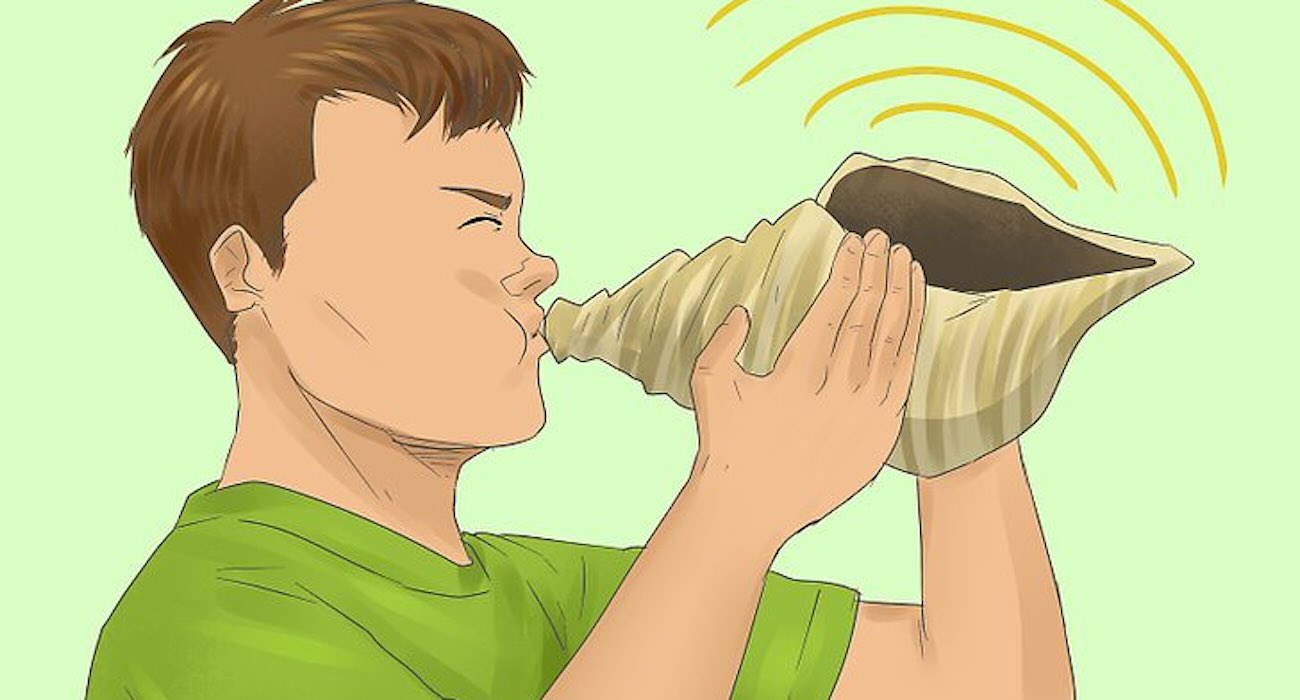
Blowing through a conch shell could help treat a potentially deadly snoring condition, according to new research from India.
Patients who took part in the ancient practice regularly for six months experienced a significant reduction in their symptoms of obstructive sleep apnea (OSA), a common sleep disorder where breathing stops repeatedly during the night due to a blocked airway.
It leads to loud snoring, restless sleep, and daytime sleepiness, and can increase the risk of high blood pressure, heart disease, and stroke.
Blowing the conch shell, called shankh blowing, has been part of Indian culture for thousands of years.
The new study, published in the European Respiratory Society’s ERJ Open Research, showed that people with moderate OSA who practiced shankh blowing slept better and felt more alert during the day, but most importantly had fewer breathing interruptions at night.
The research team determined that conch blowing— a traditional yogic breathing exercise where you exhale sharply through a conch shell—could reduce the need for medication or machines.
Currently, the standard treatment for OSA is a ‘continuous positive airway pressure machine’, or CPAP, which keeps the patient’s airway open by blowing air through a face mask throughout the night.
“While effective, many patients find it uncomfortable and struggle to use it consistently,” said study leader Dr. Krishna K. Sharma, of the Eternal Heart Care Centre and Research Institute in Jaipur, India.
In his clinical practice, several patients used the shankh-blowing method and reported feeling more rested and experiencing fewer symptoms.

“These observations led us to design a scientific study to rigorously test whether this simple, ancient practice could serve as a meaningful therapy for people with OSA.”
The study involved 30 participants with moderate OSA, aged between 19 and 65, who were assessed at the Research Institute between 2022 and 2024.
They were tested with polysomnography, meaning they were monitored throughout a night’s sleep. They were also asked questions about the quality of their sleep and how sleepy they feel during the day.
They were randomly assigned to either be trained to practice blowing through a conch shell or a deep breathing exercise.
Participants in the first group were provided with a traditional shankh used in yoga, and were trained at the clinic before beginning home-based practice requiring a minimum of 15 minutes, five days per week. The patients were then reassessed after six months.
Compared to the people who practiced deep breathing, the people who practiced shankh blowing were 34% less sleepy during the daytime. They also reported sleeping better.
4-5 Fewer Apneas Per Hour
Polysomnographs revealed that they had on average four to five fewer apneas per hour—where breathing stops during sleep. They also had higher levels of oxygen in their blood during the night.
“The way the shankh is blown is quite distinctive,” explained Dr. Sharma. “It involves a deep inhalation followed by a forceful, sustained exhalation through tightly pursed lips.
“This action creates strong vibrations and airflow resistance, which likely strengthens the muscles of the upper airway, including the throat and soft palate – areas that often collapse during sleep in people with OSA.
“The conch’s unique spiraling structure may also contribute to specific acoustic and mechanical effects that further stimulate and tone these muscles.
For people living with OSA, especially those who find the CPAP face masks uncomfortable, unaffordable, or inaccessible, the study offers a promising alternative that is simple and low-cost.
MORE SLEEP TIPS:
• Device from MIT Startup Helps People Fall Asleep–Putting Your Mind on ‘Do Not Disturb’
• Top Strategies to Beat Snoring, According to New Poll of Sleepless Adults
• Smell of Simple Fragrance While Sleeping Produces Major Memory Boost in Older Adults
The team noted that this is a small study, but they are now “planning a larger trial involving several hospitals”.
“This next phase will allow us to validate and expand on our findings in a broader, more diverse population and assess how shankh blowing performs over longer periods.
“We also want to study how this practice affects airway muscle tone, oxygen levels and sleep in greater detail.
“We’re particularly interested in comparing shankh blowing with standard treatments like CPAP, and in examining its potential help in more severe forms of OSA.”
Professor Sophia Schiza, head of the European Respiratory Society (ERS) group on sleep disordered breathing, who was not involved in the study, welcomed the findings.
“While CPAP and other treatments are available based on careful diagnosis of disease severity, there is still need for new treatments,” said the professor at the University of Crete, in Greece.
RELATED: Groundbreaking Trial of Cannabinol Product Shows Better Than Melatonin For Sleep
“This is an intriguing study that shows the ancient practice of shankh blowing could potentially offer an OSA treatment for selected patients by targeting muscles training. A larger study will help provide more evidence for this intervention which could be of benefit as a treatment option or in combination with other treatments in selected OSA patients.”
SHARE THE NATURAL OPTION on Social Media For Friends Who Have Sleep Apnea…

